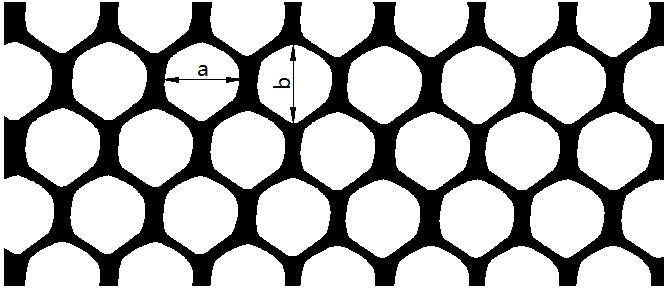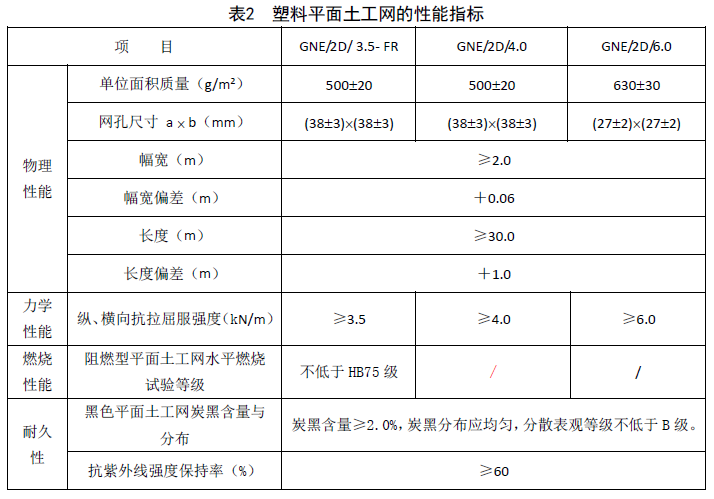17
2018
-
10
Interpretation of Geosynthetics Series Standards (IV): Technical Standard Geosynthetics Network for Railway Engineering (Q/CR 54
Author:
I. Introduction
With the rapid development of economy, the types, varieties and quantities of geosynthetics products in China are gradually increasing, and their application scope and application fields are becoming more and more extensive. In order to promote the standardization and standardization of geosynthetics products, unify the relevant technical requirements of products, and ensure the quality of products and projects, the geosynthetics products and application technical standards or specifications have been compiled or revised by relevant industries in China recently. In order to facilitate colleagues to timely understand the relevant standards (specifications) information and grasp the latest developments, the Secretariat of China Geosynthetic Materials Engineering Association has been collecting and sorting out the relevant standards and specifications for geosynthetics.
This issue introduces the standard of China Railway Corporation, Part 4 Geotechnical Network of Geosynthetics for Railway Engineering (Q/CR 549.4-2016), which was promulgated and implemented on January 8, 2017.
Necessity of compilation
With the rapid development of railway construction in China, strict requirements are put forward for the protection of railway roadbed slope and soil and water conservation based on the safety and importance of railway operation. In view of the good soil consolidation effect of geotechnical network in roadbed slope, it has been widely used in roadbed engineering, and has played a positive role in improving the afforestation and soil and water conservation of railway roadbed engineering.
At present, the types and technical indicators of geotechnical network stipulated by national standards and other industry standards are not systematic and outdated, and can not meet the engineering needs of railway industry. There are confusions in design and construction, which need to be systematically sorted out and updated.
At the same time, more and more geotechnical networks are used in railway subgrade engineering, and the high standards of railway subgrade engineering put forward strict requirements for geotechnical network materials. However, the current national standards and the technical standards of geotechnical networks defined by the Ministry of Transport and Communications industry standards can not meet the needs of Railway Engineering construction. In order to standardize the product quality and application scope of geotechnical network for railway engineering Subgrade in China, promote the standardization, standardization and serialization of geotechnical network products, unify the relevant technical requirements of products, and ensure the project quality, China Railway Corporation has established and compiled the product standard of Geosynthetic Material Part 4 Geosynthetic Network for Railway Engineering.
Main Contents of Standards
(1) The classification method, naming format, product specifications and application scope of geotechnical network products are formulated.
(2) Technical requirements for geotechnical network products for railway engineering have been formulated, and clear requirements have been put forward in terms of appearance, raw materials and performance indicators.
(3) A series of testing methods for geonet products are put forward, including product appearance, unit area quality, mesh size of plastic plane geonet, thickness, width, length, tensile yield strength, tensile strength, ultraviolet resistance, carbon black content, carbon black distribution, flame retardancy and resilience of plastic three-dimensional geonet. The principle, equipment, sample, test procedure and calculation method of the main test are specified in detail in the form of appendix.
(4) The inspection rules for geotechnical network products are formulated, including inspection classification, factory inspection, type inspection, batch and sampling, and determination rules.
(5) Specific requirements for marking, packaging, transportation and storage of geonet products are specified.
4. Brief introduction of some standards
Below is a brief introduction to some of the contents of the standard. For more details, please read the product standard.
(1) The classification of geotechnical network products in railway engineering is defined.
Geotechnical network can be divided into plastic plane geotechnical network (see Fig. 1) and plastic three-dimensional geotechnical network (see figs. 2 and 3).

Figure 1 Plastic plane geonet shape

Figure 2 Plastic three-dimensional geonet shape (concave-convex bubble surface)

Figure 3 Plastic three-dimensional geonet shape (concave-convex inner core)
(2) The naming standards of geotechnical network products in railway engineering are defined.
In order to unify the naming of geotechnical network products for railway engineering, the naming format of geotechnical network determined in this standard is: product type + shape + product strength + flame retardant type (non-flame retardant type does not have this item).
The naming format of geonet products is as follows:

For example, GNE/2D/3.5-FR indicates that the tensile yield strength of flame-retardant plastic planar geonets is 3.5 kN/m, and GNE/3D/1.8 indicates that the tensile strength of plastic three-dimensional geonets is 1.8 kN/m.
(3) Define the scope of application of geotechnical network products in Railway Engineering
(1) For the surface greening and protection structures of rock slope, shotcrete-anchor slope and masonry retaining wall with plants, plastics plane geonet should be selected.
(2) For stabilizing soil slope, plastic three-dimensional geonet or other reinforcement methods should be adopted.
Specific application classifications of railway geotechnical network products are shown in Table 1.

(4) Provision of technical indicators for geotechnical network products in Railway Engineering
The physical, mechanical, combustion and durability indexes of various types of geonet products are defined in this standard. Taking plastic plane geonet as an example, its specific performance index is shown in Table 2.

Physical performance indicators include: mass per unit area, mesh size, width, width deviation, length deviation, length deviation.
The mechanical properties include longitudinal and transverse tensile yield strength.
Combustion performance indicators include: horizontal combustion test grade of flame retardant plane geotechnical network.
Durability indicators include the content and distribution of carbon black in black plane geonet and the retention rate of ultraviolet resistance.
undefined




